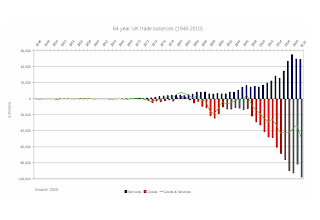Bubbles - Twitter
"The company’s initial public offering was a staggering success, of
course. Priced at $26, the stock closed its first day of trading at $45
per share. The company was thus endowed with a market capitalization of
$25 billion. The company has no earnings, but who cares. Adding back
non-cash charges to produce earnings before interest, taxes,
depreciation and amortization, then adding back the financial value of
non-cash employee compensation, the company can be regarded as
profitable. Such a number for 2013 may approximate $50 million or so.
The company is valued at 500 times such results, which exclude expenses
that do have economic value. Correctly accounted, the company makes not a
dime...
We may be seeing the leading edge of a wave of credit problems among corporate borrowers in emerging market economies. Lest one think it does not affect the U.S. and other developed market countries, recall the Asian crisis chronology. Thailand devalued its currency in the summer of 1997 and few outside of Thailand cared. But contracting Asian demand reduced demand for oil, and Russia (whose exports are 80% oil) defaulted in August of 1998. Risk spreads widened, and five weeks later, Long Term Capital Management was insolvent. That was a systemic event and caused disruption in markets in general, and a stock market decline." To paraphrase his analysis of the cause ... the Federal Reserve Bank.
John Gilbert, Chief Investment Officer of General Re-New England Asset Management
H/t ZeroHedge.com
We may be seeing the leading edge of a wave of credit problems among corporate borrowers in emerging market economies. Lest one think it does not affect the U.S. and other developed market countries, recall the Asian crisis chronology. Thailand devalued its currency in the summer of 1997 and few outside of Thailand cared. But contracting Asian demand reduced demand for oil, and Russia (whose exports are 80% oil) defaulted in August of 1998. Risk spreads widened, and five weeks later, Long Term Capital Management was insolvent. That was a systemic event and caused disruption in markets in general, and a stock market decline." To paraphrase his analysis of the cause ... the Federal Reserve Bank.
John Gilbert, Chief Investment Officer of General Re-New England Asset Management
H/t ZeroHedge.com


Comments
Post a Comment